The territory of modern Latvia in the 13th century was invaded by armed Germanic crusaders who founded Riga, the capital city of Latvia, and established control over the indigenous people and territory. They also built many brick and stone castles in the area for living and defence purposes, with thick walls, battlements, towers, and in many cases a moat. Most of the castles are now ruins as the result of a long time passing by since then, but some have been preserved quite well, which makes both a good reason to visit and get to feel the vibes of Latvian history. So here is a selection of 15 castles and castle ruins to add to your Latvian travel itinerary.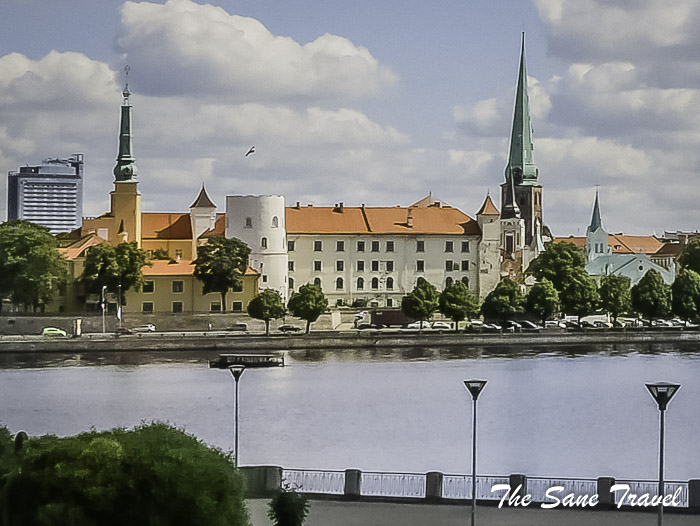
Riga Castle
Riga Castle has stood on the right bank of the River Daugava for more than 700 years. The castle was built in 1330. From the early 14th century to the late 16th century Riga Castle served as the residence of Master of the Livonian Order. After the dissolution of Livonian feudal states, Riga Castle was taken over by Polish, Swedish, and Russian administrations. The castle was destroyed several times; it also underwent significant redevelopment and extension. As the result of the renovation works carried out before the upcoming Centenary of the Republic of Latvia in 2018, Riga Castle has regained its original splendour.  Today, it houses the residence of the President of Latvia. Check also things you can do in Riga for free.
Today, it houses the residence of the President of Latvia. Check also things you can do in Riga for free.
Turaida Castle
Turaida Stone Castle was built in the early 13th century. Until the end of the 16th century, it served as the residence of Archbishops of Riga who ruled the lands. Over the centuries the castle was rebuilt and improved until a fire damaged it in 1776, after which it was no longer inhabited and gradually turned into ruins. Thanks to thorough archaeological research and restoration of the buildings, the castle experienced its revival in the second half of the 20th century. Nowadays, the castle houses expositions reflecting the history of the castle and presenting the antiques collected during the excavations in the castle area. 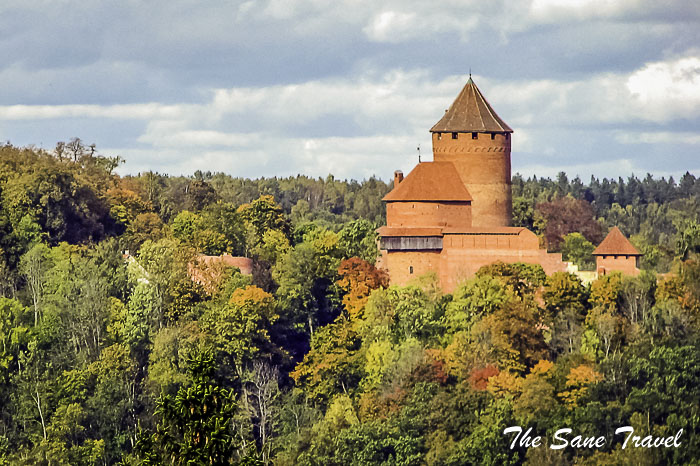
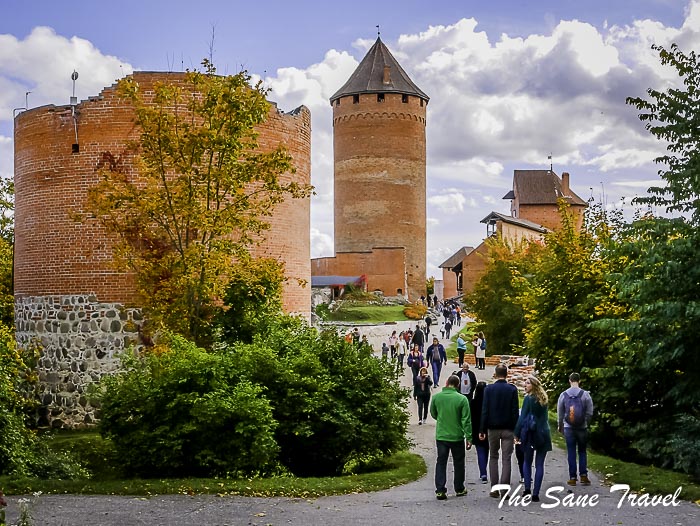
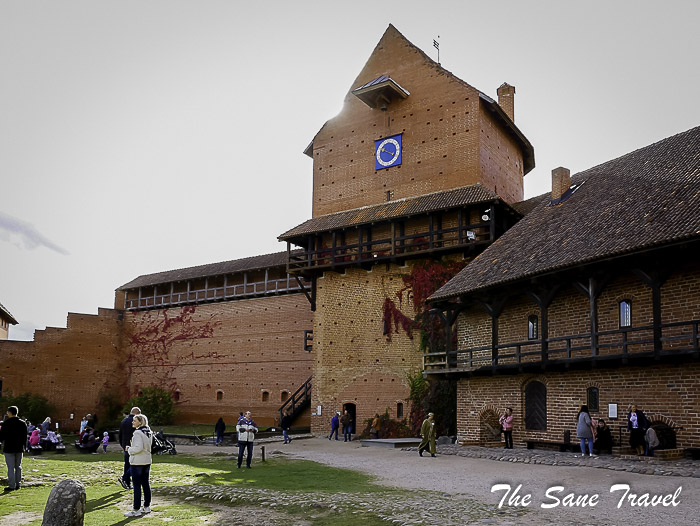
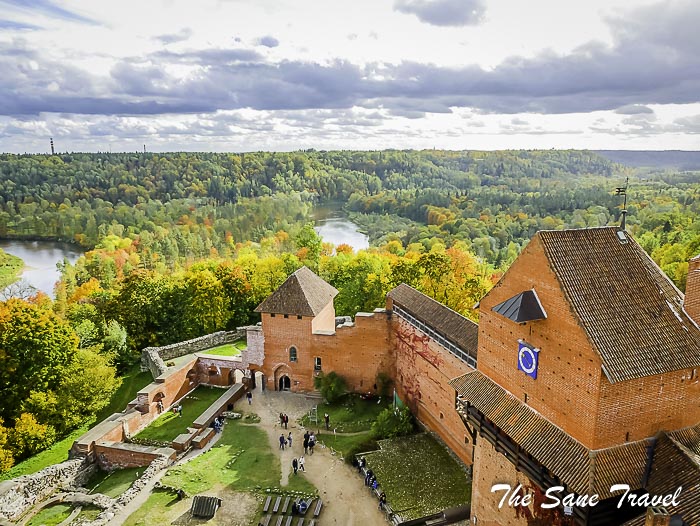 The main tower of Turaida Castle rises over the forests of the ancient Gauja River valley. After having vanquished its 139 brick steps, you can enjoy breath-taking views of the meandering Gauja River valley. Add Turaida Castle to your Sigulda city visit itinerary.
The main tower of Turaida Castle rises over the forests of the ancient Gauja River valley. After having vanquished its 139 brick steps, you can enjoy breath-taking views of the meandering Gauja River valley. Add Turaida Castle to your Sigulda city visit itinerary.
Sigulda Castle ruins
The Livonian Order Castle of Sigulda was built in the early 13th century. The castle was damaged in wars and therefore lost its military importance. Moreover, the castle was destroyed during the Northern War in the early 18th century and has not been restored since then. Nowadays, when visiting the ruins, you can walk along the stone walls and climb the castle towers. An exposition of medieval weapons can be seen in the northern tower. There is an open-air stage where visitors can enjoy the annual Opera Music Festival as well as other events. 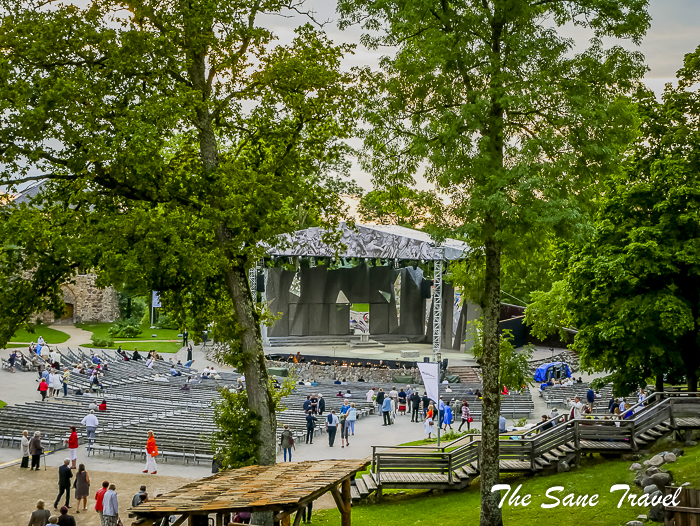 The area of Sigulda Castle is a great place to appreciate the beautiful landscapes of the Gauja River valley.
The area of Sigulda Castle is a great place to appreciate the beautiful landscapes of the Gauja River valley.
Cesis Castle
Cesis Castle was built in the early 13th century and served as the residence of the Grand Master of German Livonian Order who came to Christianise the Latvians. Over the centuries the castle shared its destiny with the city of Cesis in battles with Russian, Polish, and Swedish troops. Repeatedly rebuilt and expanded, the castle got its present architectural appearance at the beginning of the 16th century. The castle was seriously damaged during the Livonian War, but at the beginning of the Great Northern War, it was abandoned and has never been used for military purposes again. 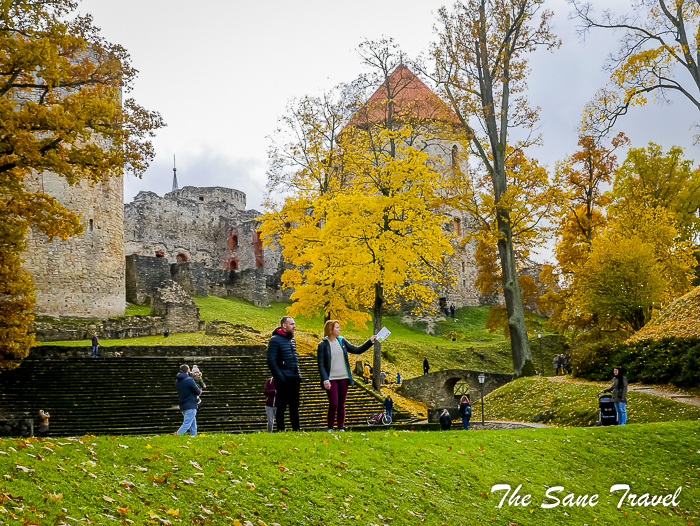
Rauna Castle ruins
Rauna Castle was one of the major Archbishop's residences since the end of the 13th century. The Archbishop with his entourage and servants spent autumns and winters in the castle. In the first half of the 16th century Rauna Castle was rebuilt and got the size that can be seen nowadays. The castle suffered in many armed conflicts and has been destroyed nine times by Russian, Polish, Swedish, and German troops. From the 17th century it has been in ruins.
Rauna Castle ruins are among the best-preserved castle ruins in the country, and it is a popular tourist destination. Visitors can enjoy a spectacular view of Rauna town from the sightseeing tower.
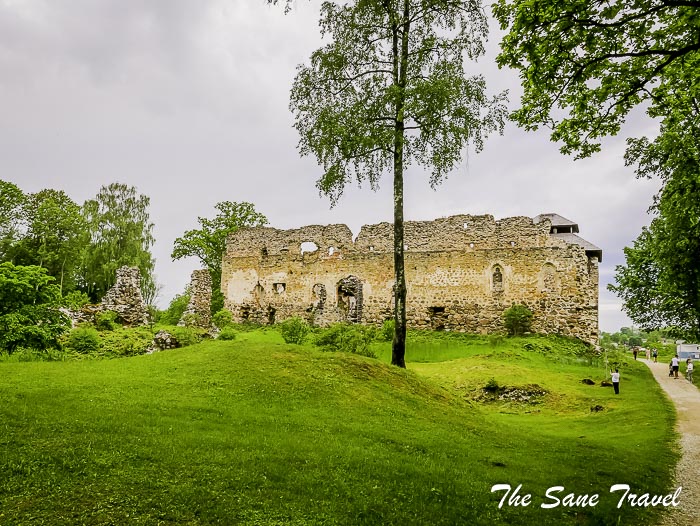
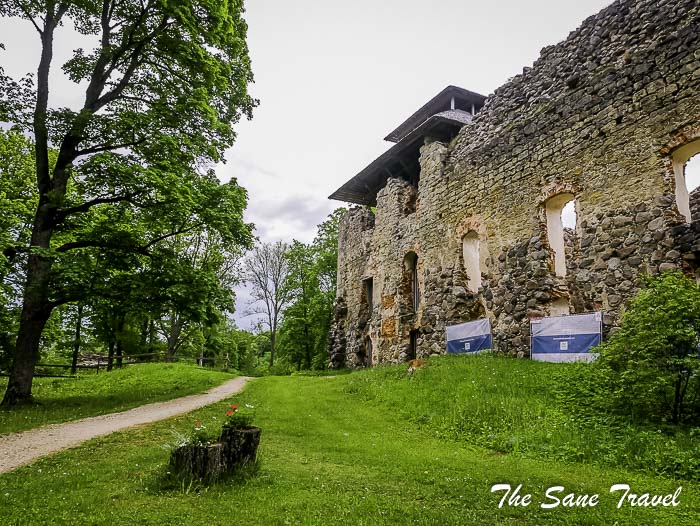
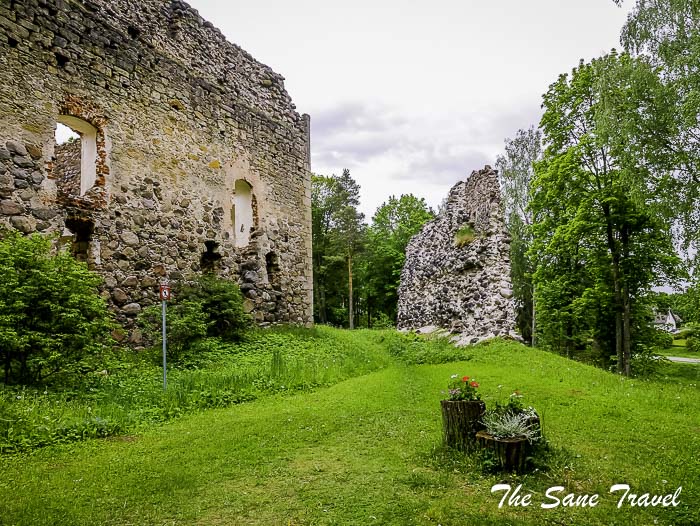 As Rauna Castle is located about 30 kilometres from Cesis, also visit Rauna when you go to Cesis.
As Rauna Castle is located about 30 kilometres from Cesis, also visit Rauna when you go to Cesis.
Lielstraupe Castle
Lielstraupe Medieval Castle is one of the most outstanding valuables of Latvian cultural and historical heritage. The Great Straupe Castle was built during the 13th century by fon Rozen family, one of the German noble families who governed this area for 700 years. Their governing was so effective that the little town of Straupe quickly became a bustling trade city and was then admitted to the Hanseatic League. It is unique as the castle and the church are located in one building.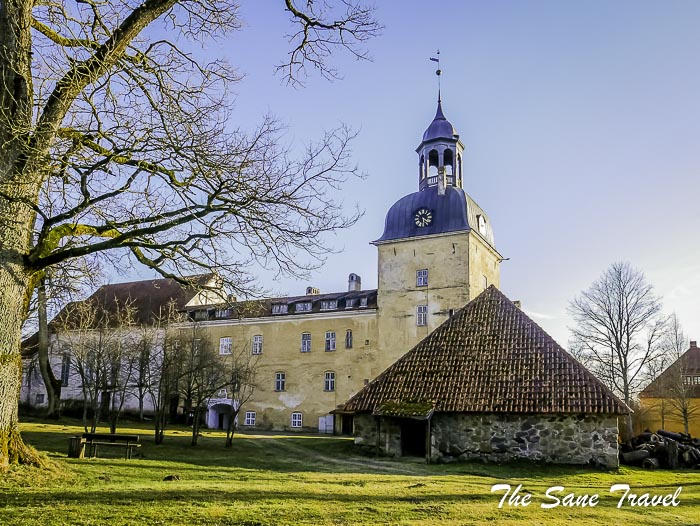
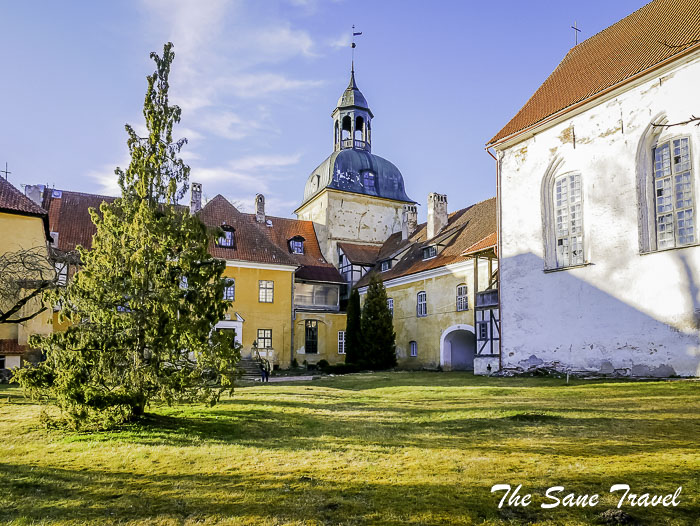
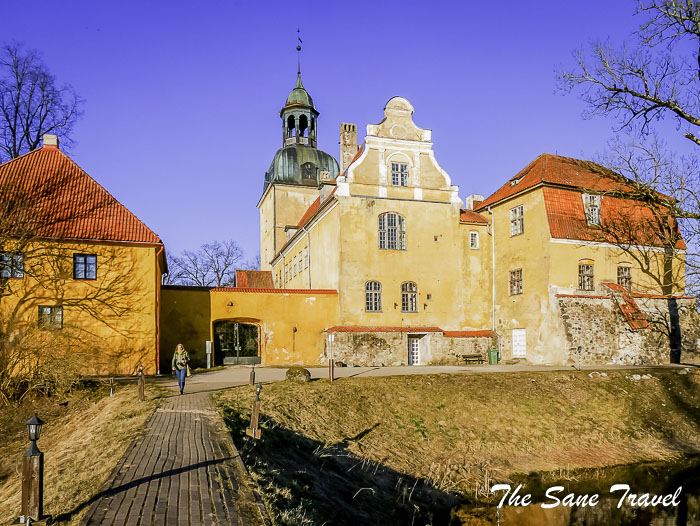
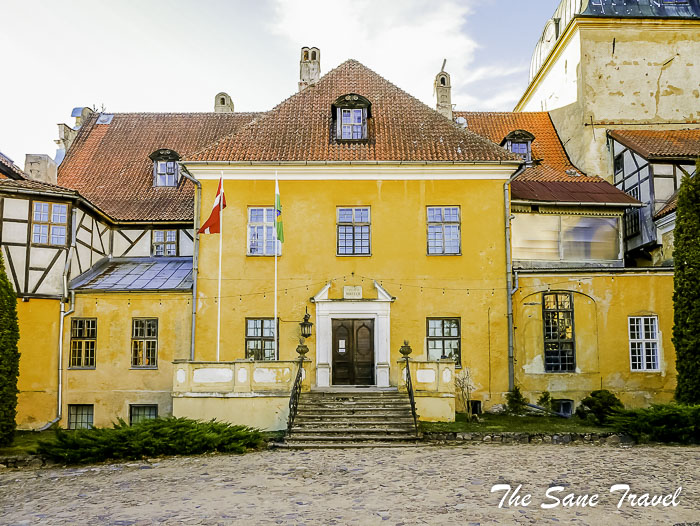
Augstroze Castle ruins
Riga Castle Archbishop's vassal residence on top of the hill in Augstroze was built in the late 13th century. You can stop there to see a castle mound with some ruins. 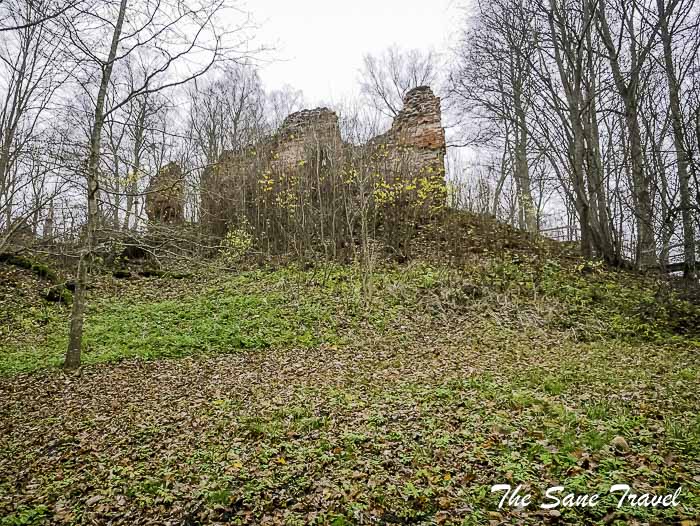
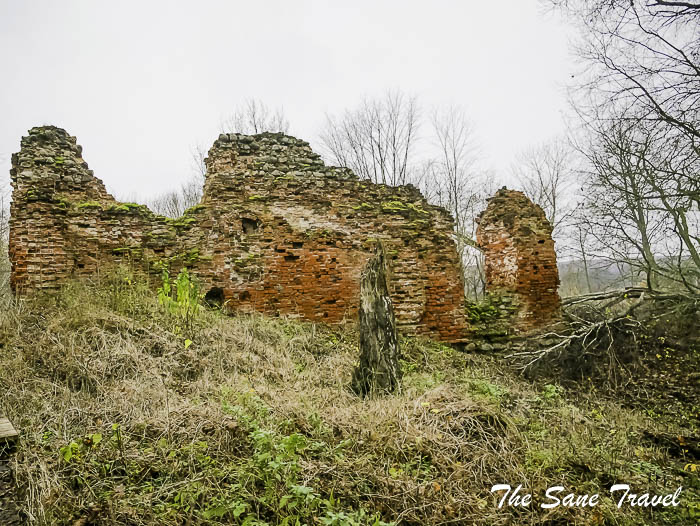 This not very well-known castle hill is also offering one of the most unusual views of nearby Lake Lielezers.
This not very well-known castle hill is also offering one of the most unusual views of nearby Lake Lielezers.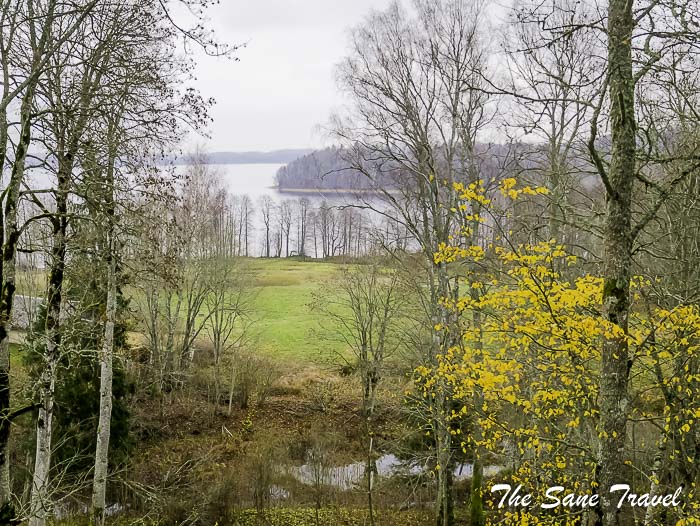
Koknese Castle ruins
One of the largest and most significant medieval castles in Latvia was Koknese Castle. The construction work of the castle of the Archbishop of Riga began in the early 13th century. Koknese Castle was abandoned after the bombing of the western towers in the early 18th century and the impressive ruins have remained untouched since then. Until 1966, the castle ruins stood high on a hill, but its foundations were submerged into the rivers of Daugava and Perse after the Plavinas hydroelectric power plant was built on the Daugava. Koknese medieval castle ruins remain one of the most picturesque places in the area until now.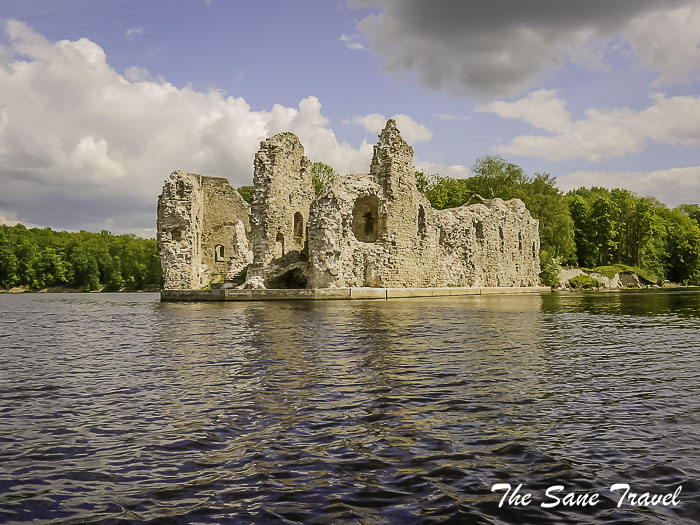
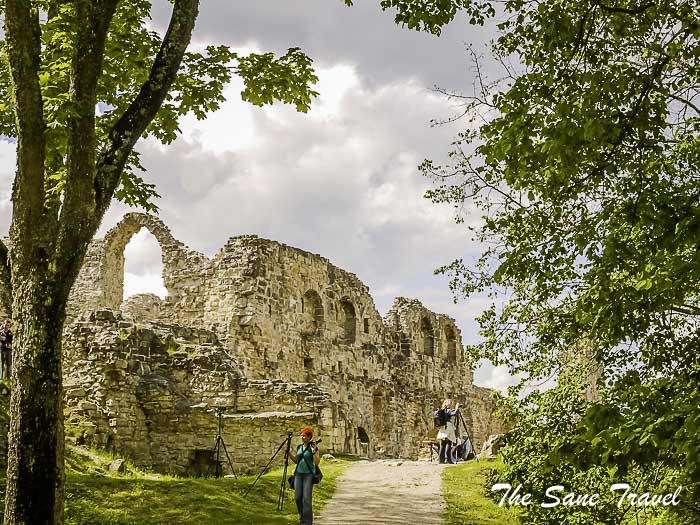
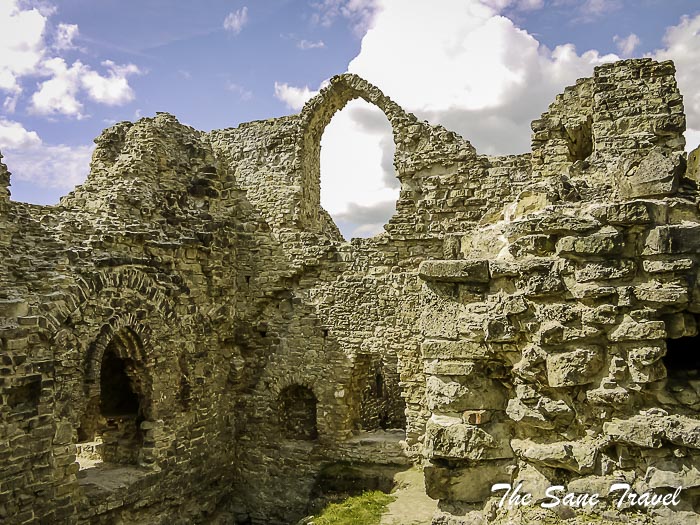
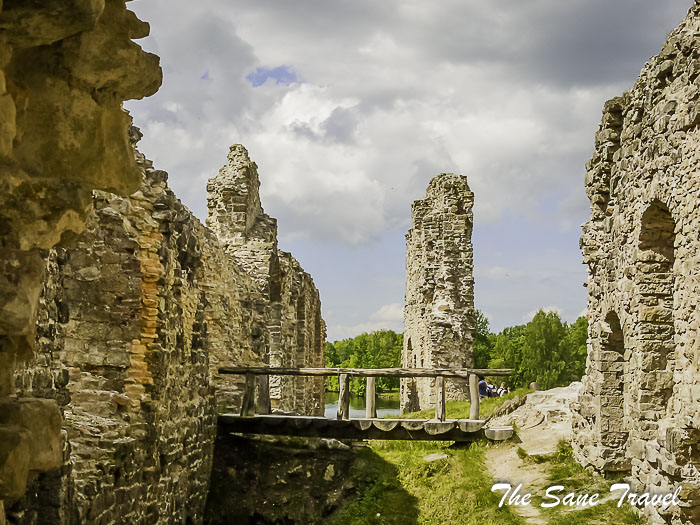
Dobele Castle ruins
The Livonian Order's Stone Castle is the oldest building in Dobele and an architectural monument of importance. It was built in the early 14th century. The castle was inhabited until 1730. Works for the conservation of the ruins were launched in 2002. 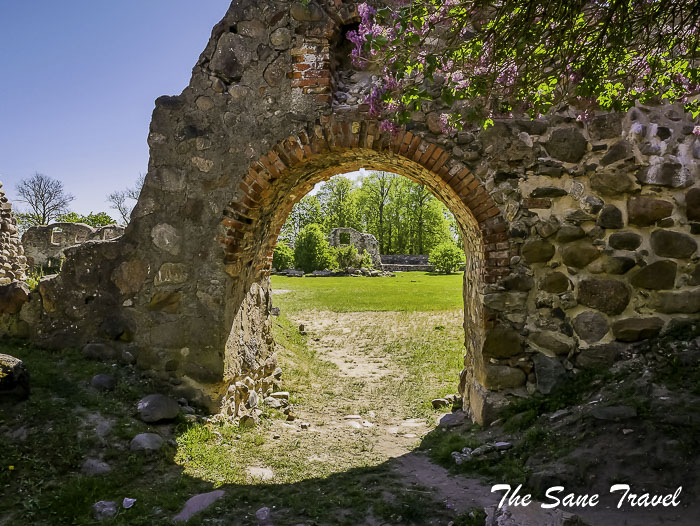
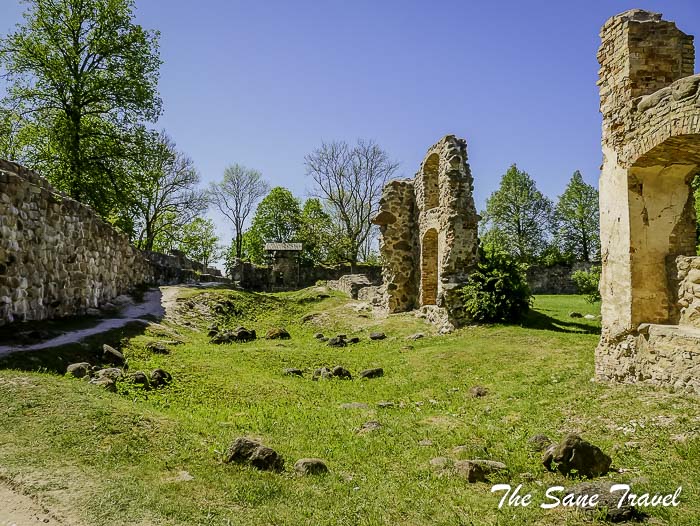
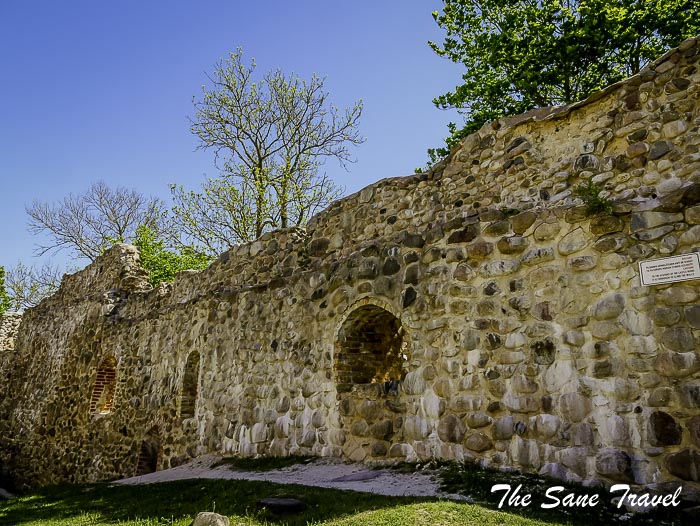 The chapel of the castle has partially regained its shape following the reconstruction. Nowadays, it is a modern building surrounded by ancient walls with exhibition halls and a viewing area on the roof. Visitors can see the ruins of the ancient castle and the whole of Dobele from the top of the building.
The chapel of the castle has partially regained its shape following the reconstruction. Nowadays, it is a modern building surrounded by ancient walls with exhibition halls and a viewing area on the roof. Visitors can see the ruins of the ancient castle and the whole of Dobele from the top of the building.
Bauska Castle
Bauska Castle is a complex consisting of the ruins of an earlier castle and a latter palace on the outskirts of Bauska city. The oldest part of Bauska Castle is the impressive 15th century Fortress of the Livonian Order on the peninsula between the junction of the Musa and Memele Rivers, which once was a safeguard of the Livonian Order's border. 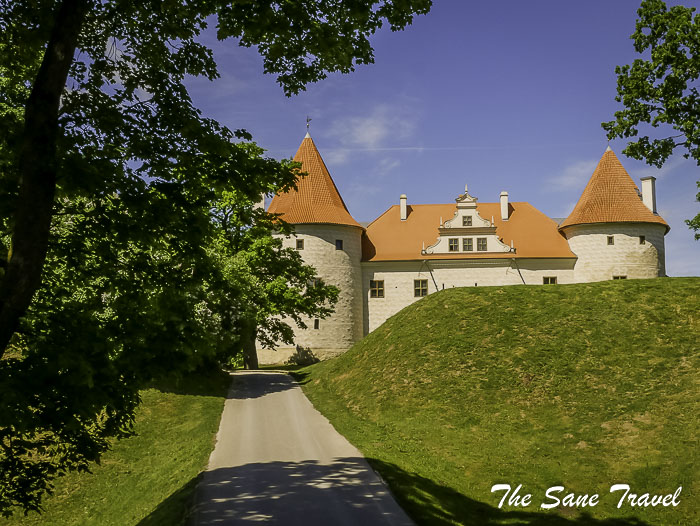
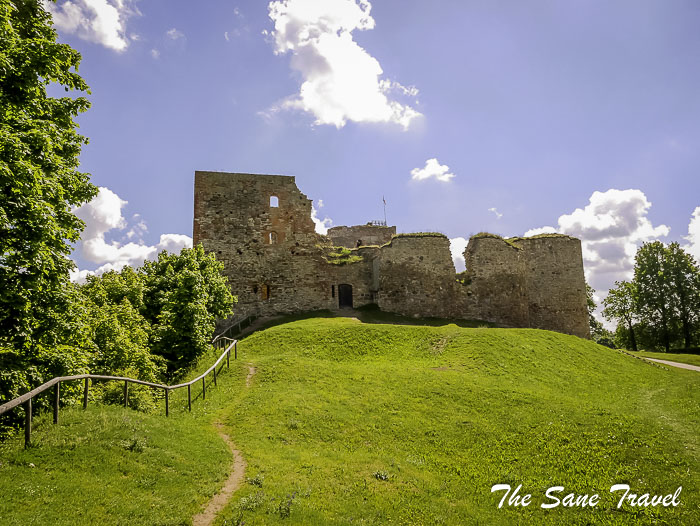
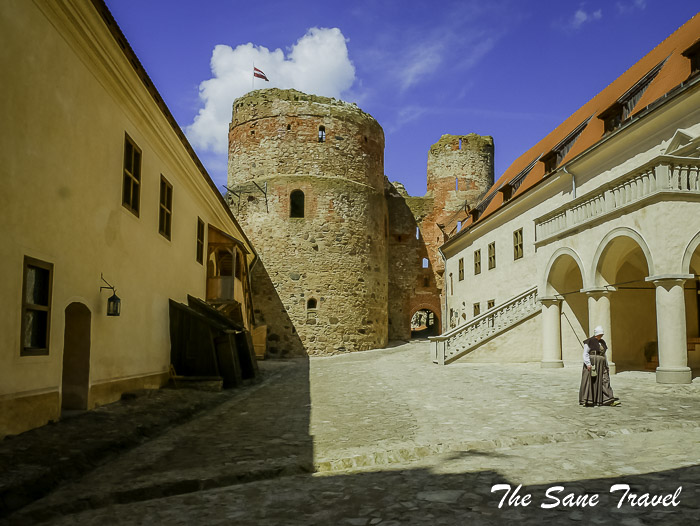
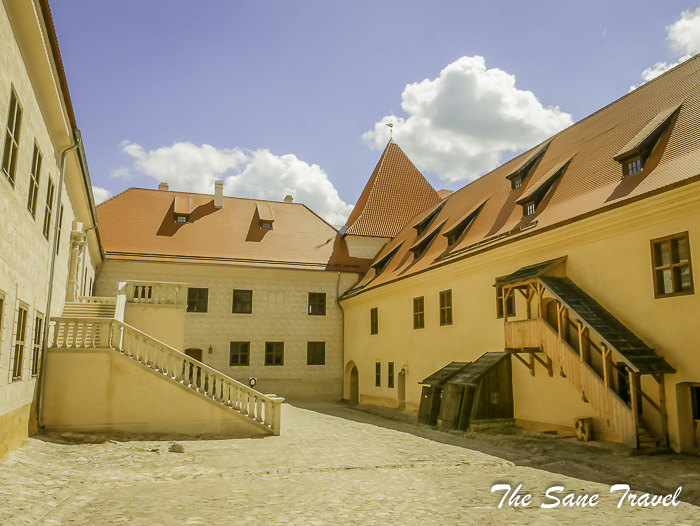 The newest part of Bauska Castle, the residence for the Dukes of Courland, was built at the end of the 16th century. Visitors can see the ruins of the Livonian Order Castle, observe the exposition on the history of the castle and other exhibitions, like "Dress and Jewellery in the Duchy of Courland "and "Bauska Castle – a Military Fortification". The concerts of classical music are held in the castle. Visiting Bauska Castle is a great addition to your day trip from Riga to the southern part of Latvia.
The newest part of Bauska Castle, the residence for the Dukes of Courland, was built at the end of the 16th century. Visitors can see the ruins of the Livonian Order Castle, observe the exposition on the history of the castle and other exhibitions, like "Dress and Jewellery in the Duchy of Courland "and "Bauska Castle – a Military Fortification". The concerts of classical music are held in the castle. Visiting Bauska Castle is a great addition to your day trip from Riga to the southern part of Latvia.
Edole Castle
Edole Castle is a Gothic castle situated on the banks of Edole Lake in the western part of Latvia. The castle was built for the bishop of Piltene in the second part of the 13th century. It was rebuilt in the 16th century and until 1920 it was the property of the Baltic-German noble family von Behr. Originally consisting of two residential buildings linked by a stone wall, the castle is surrounded by a Landscape Park. During the 18th century, the castle was expanded and in the 19th century it underwent a major reconstruction work to become one of the first examples of Neo-Gothic architecture in Kurzeme. It is an architectural and historic monument of national importance. Edole is just about 20 kilometres from Kuldiga, so add a visit to Edole Castle to your Kuldiga trip.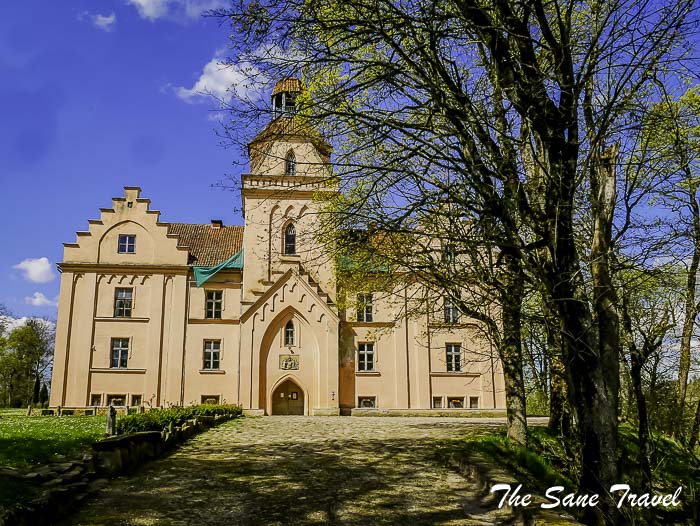
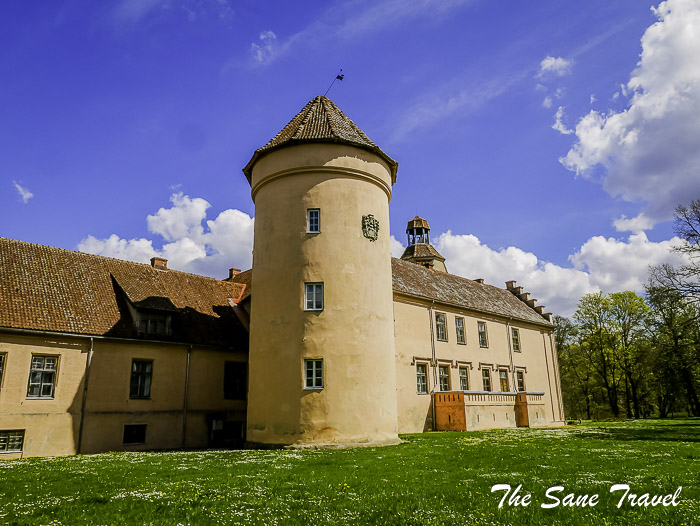
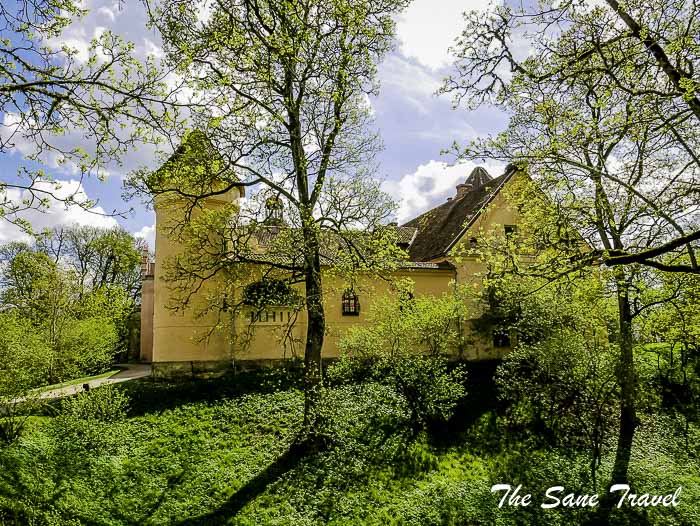
Jaunpils Castle
Jaunpils Castle was built in 1301 as a Livonian Order castle. Surrounded by a moat on three sides, it was initially inhabited by small groups of knights. Later, the castle was reconstructed, with a large defensive tower as well as upper stories being built. In the late 16th century the castle was acquired by Thies von der Recke, whose family owned the castle for almost 350 years.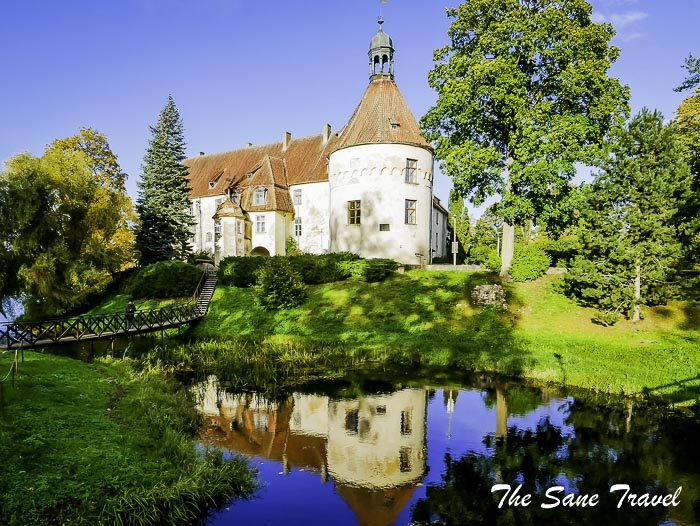
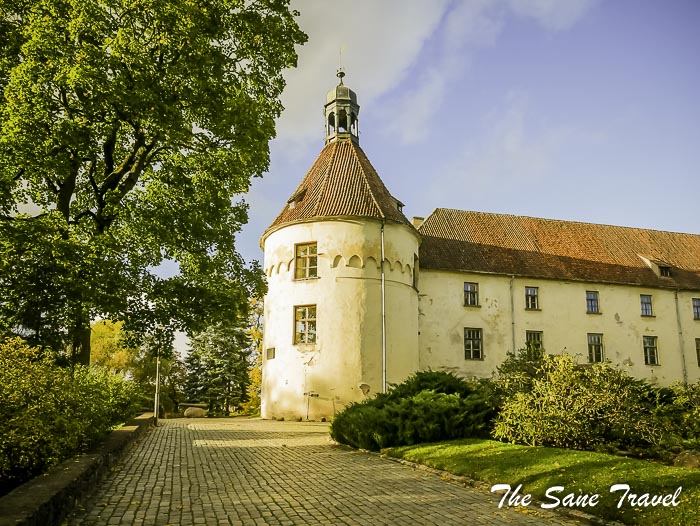
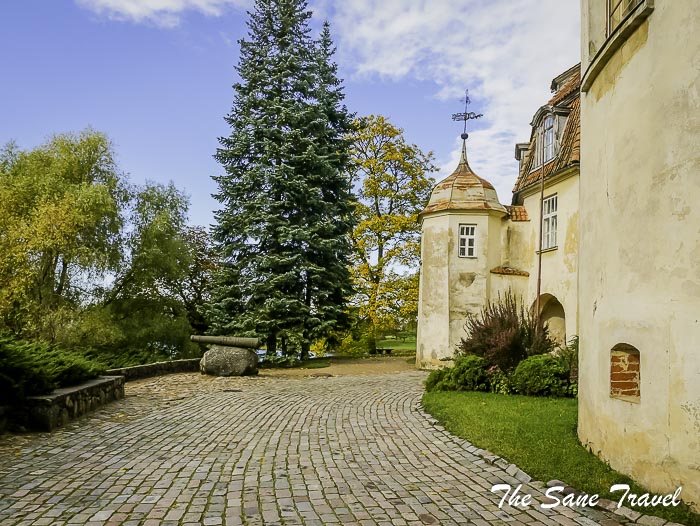
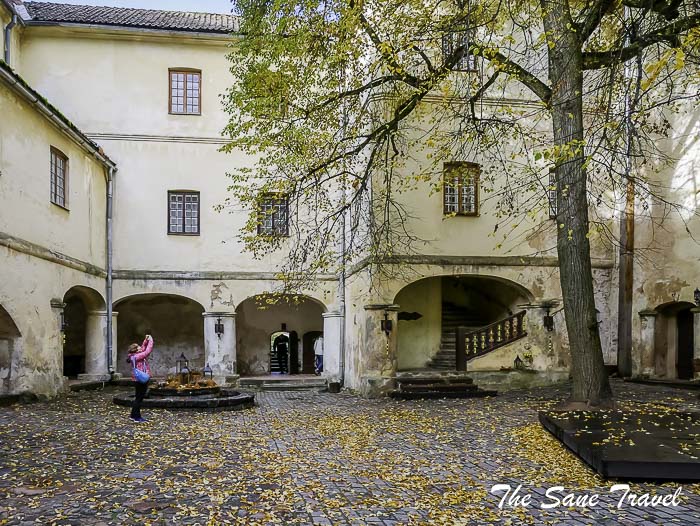 Dress up in medieval outfits and go take a look at it, forge your own coin, or enjoy a candle lit meal in the castle's tavern.
Dress up in medieval outfits and go take a look at it, forge your own coin, or enjoy a candle lit meal in the castle's tavern.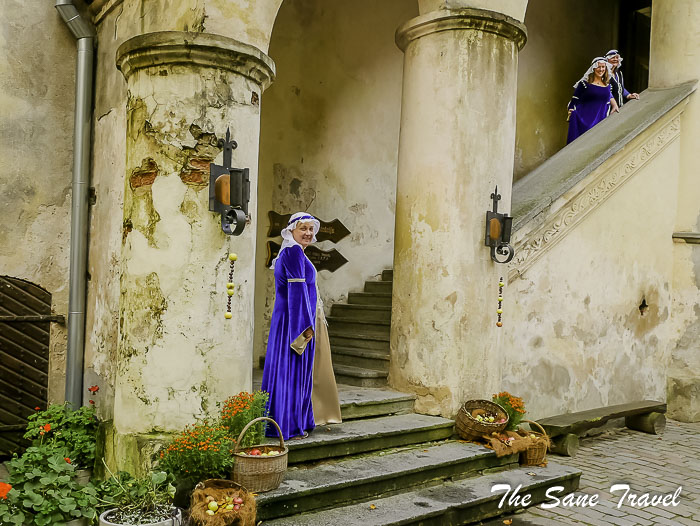
Alsunga Castle
Rather small Alsunga or Alschwangen Castle was one of several order strongholds guarding the route connecting Livonia with Prussia in Courland. The first construction works of the castle were done in the late 14th century when the part of the southern wing was built. The guard towers and other parts of the castle were gradually added between the 15th and 18th centuries. The castle did not have much military significance and later became a private property of the German noble family. It was damaged several times during the Polish-Swedish wars, after which it was always rebuilt, with time changing a look in favour of the residential building rather than a defensive castle. 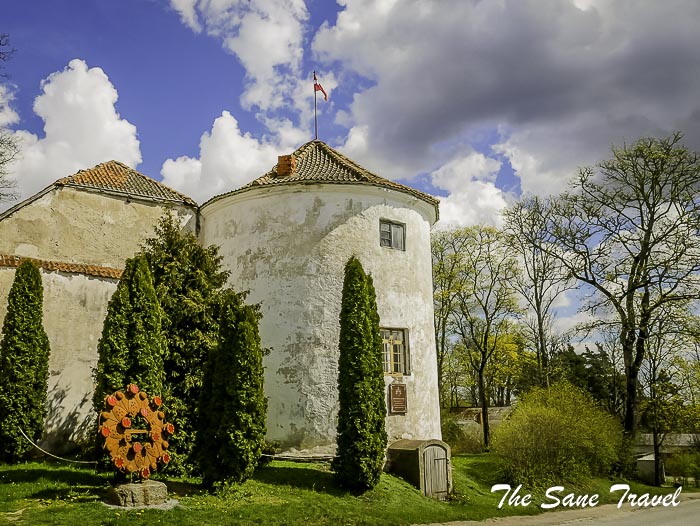
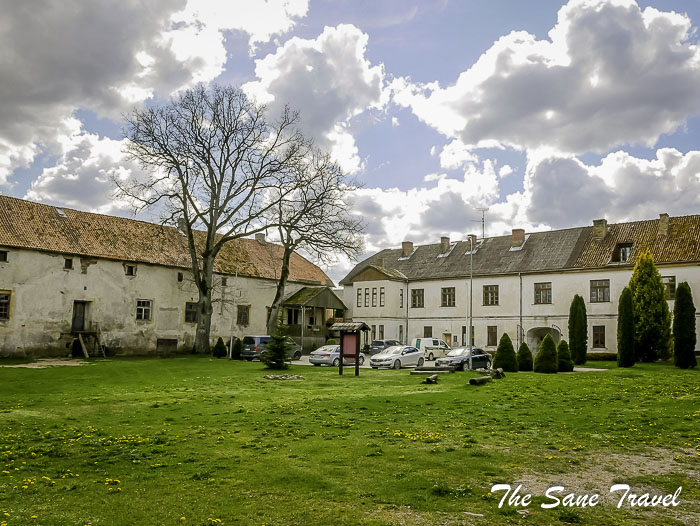
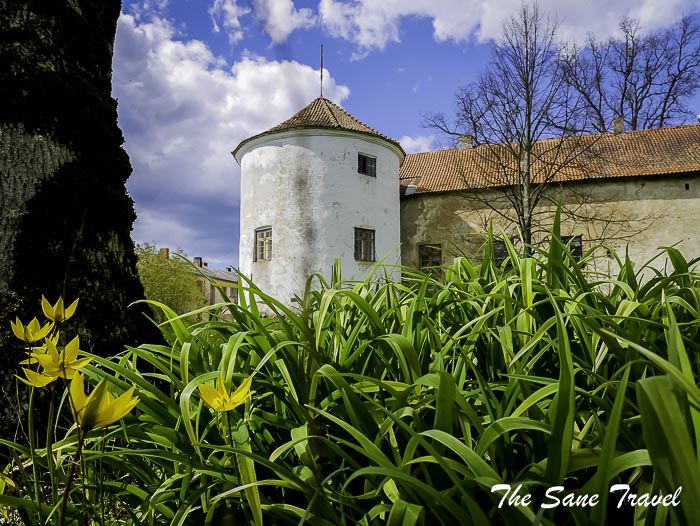 Inside the castle, there is a small museum exhibition. Alsunga is about 30 kilometres from Kuldiga, so why not extend your trip to Kuldiga and visit Alsunga Castle.
Inside the castle, there is a small museum exhibition. Alsunga is about 30 kilometres from Kuldiga, so why not extend your trip to Kuldiga and visit Alsunga Castle.
Dundaga Castle
The well preserved Dundaga Castle is the biggest castle in the Northern Kurzeme. It was built in the mid-13th century. In the early 15th century the castle was bought by Kurzeme Bishop and from the 16th to the 20th century it was owned by the noble Maidel and Osten-Zacken families. The castle burned down twice and was rebuilt several times. 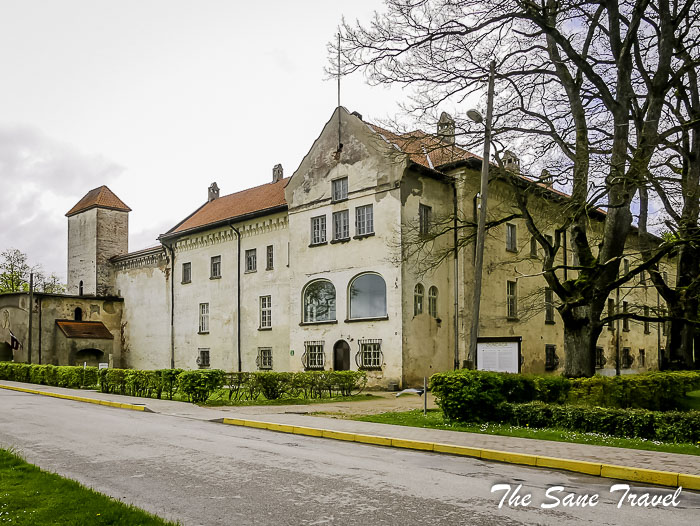
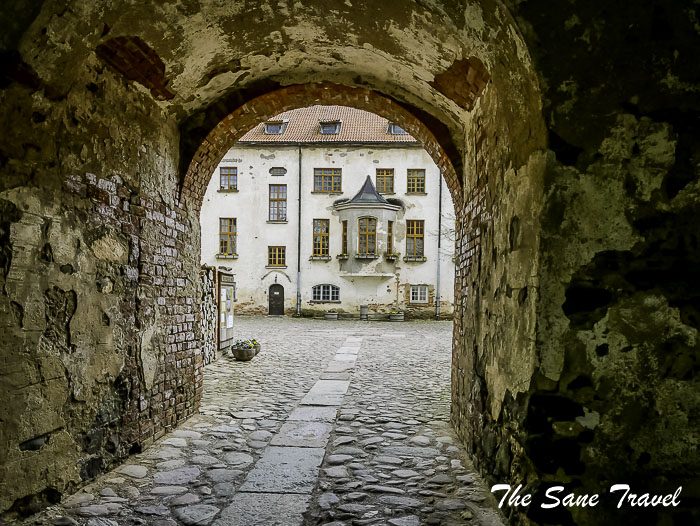
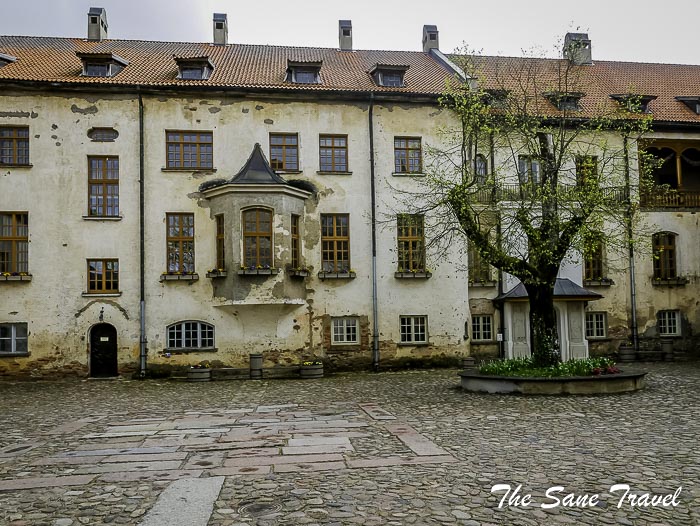
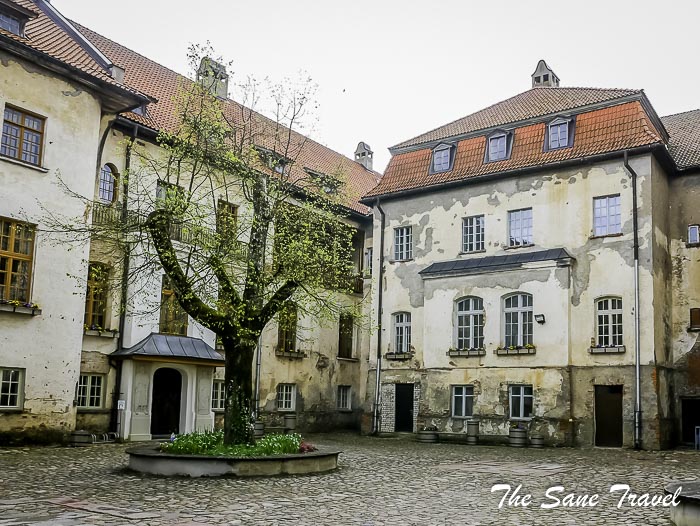 There are many legends about the castle, the most popular of them being about the Green Maiden. Today, the castle houses the Dundaga School of Music and Art, a museum, a hotel with halls for celebrations, the Dundaga Tourism Information Centre, and various exhibitions.
There are many legends about the castle, the most popular of them being about the Green Maiden. Today, the castle houses the Dundaga School of Music and Art, a museum, a hotel with halls for celebrations, the Dundaga Tourism Information Centre, and various exhibitions.
Krustpils Castle
The origins of the castle date back to 1237. From the 13th century to the 16th century Krustpils Castle was one of the three castles owned by the Archbishop of Riga. In the mid-16th century, Krustpils Castle was the property of the Polish king Stefan Batory. Polish king gave Krustpils Castle as a present to baron Nikolauss fon Korff at the end of the 16th century. Fon Korff family owned a castle till 1921. The Jekabpils city Museum of History was established in the castle in 1994, and then the restoration of the castle was started. The closed yard that was typical of medieval castles has been preserved. The interior took on its Historicism design in the mid-19th century, but there are also more ancient elements, like the gate tower, the castle walls, and the vaulted structures.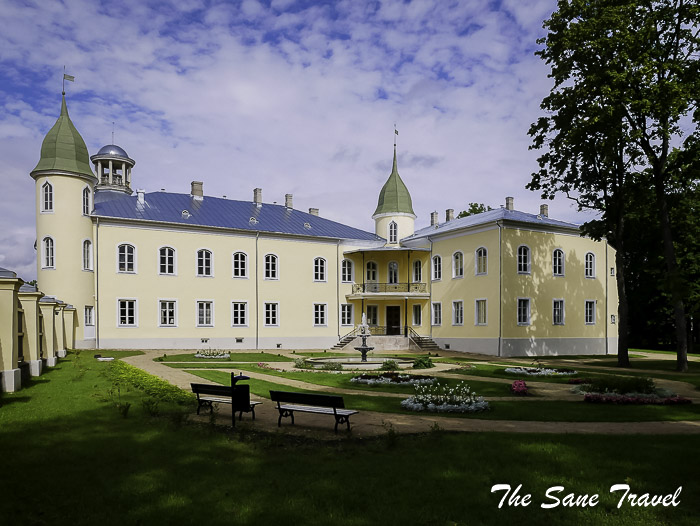

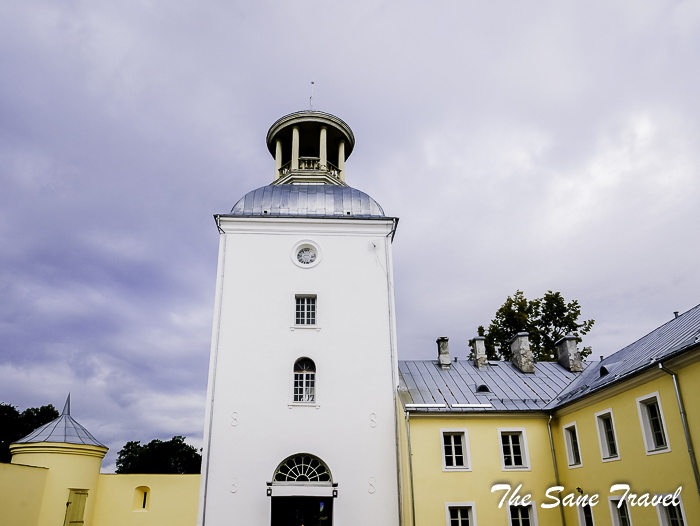
Take a look at the castle's history and art exhibits and climb the tower to watch a lovely view of Jekabpils city.
Like it? Pin it!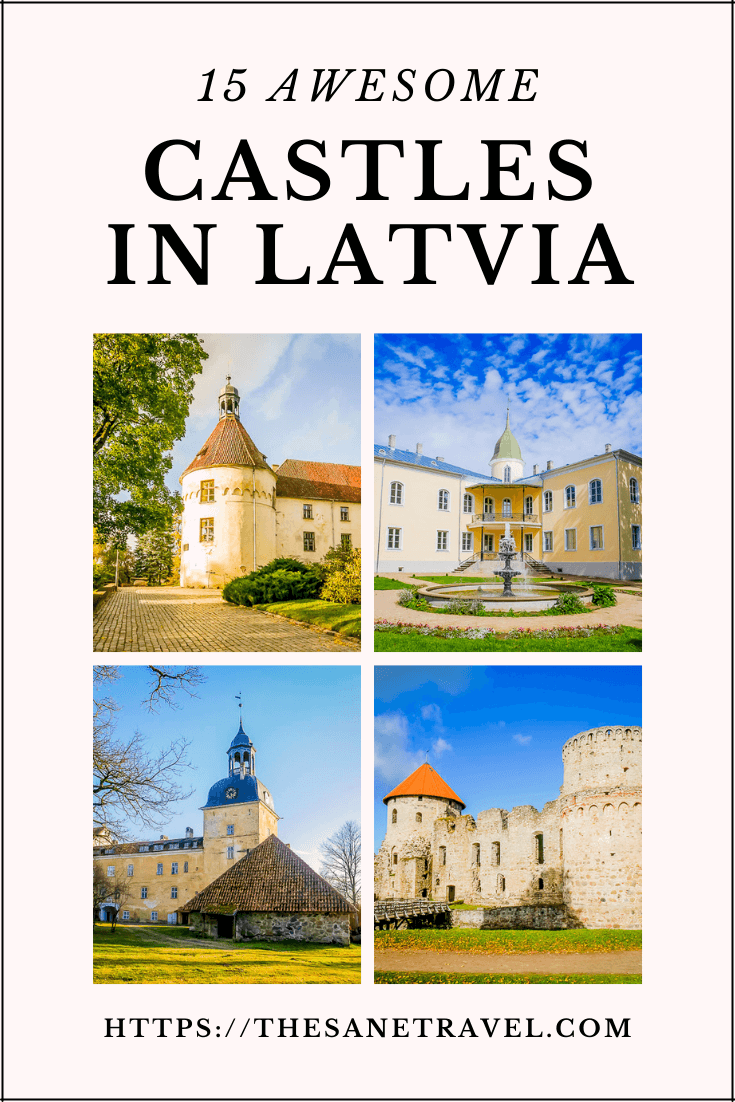
What did you think? Have you visited castles in Latvia? I’d love to hear from you so please add your comments below.
Author: Anita Sane

About the author
Anita is a part-time traveller, passionate photographer and a retired career woman from Latvia, travelling mostly solo for more than 15 years. She is a skilled travel planner who plans and executes her travels by herself. Anita wants to show you how to travel the world and open your mind to new experiences. Follow her on Facebook, Instagram, Pinterest, Twitter and Bloglovin.

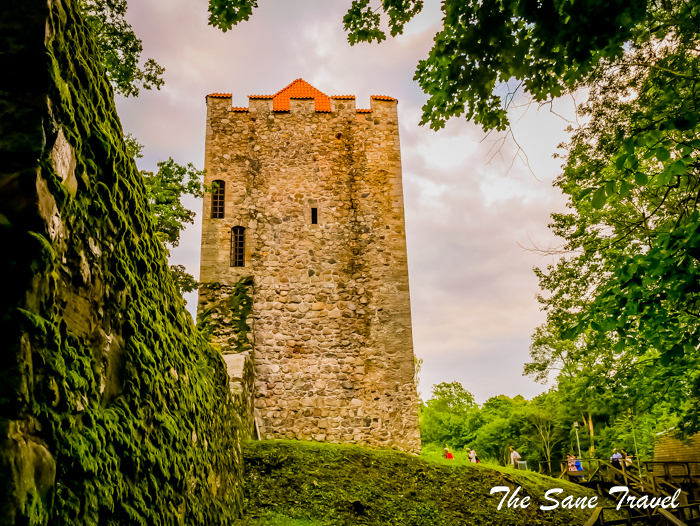
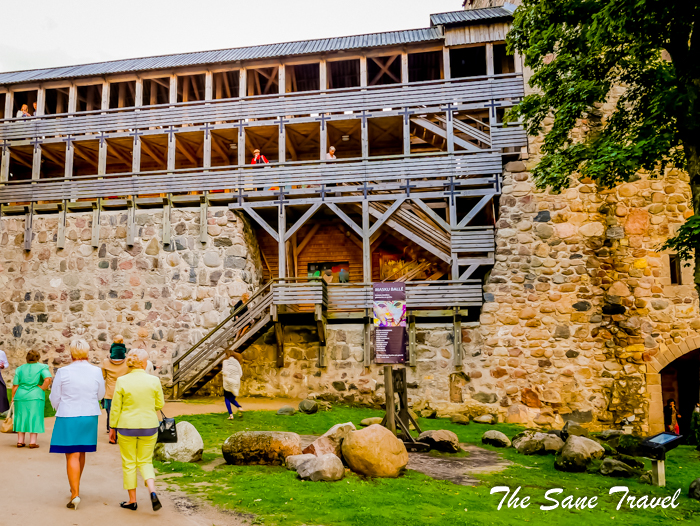

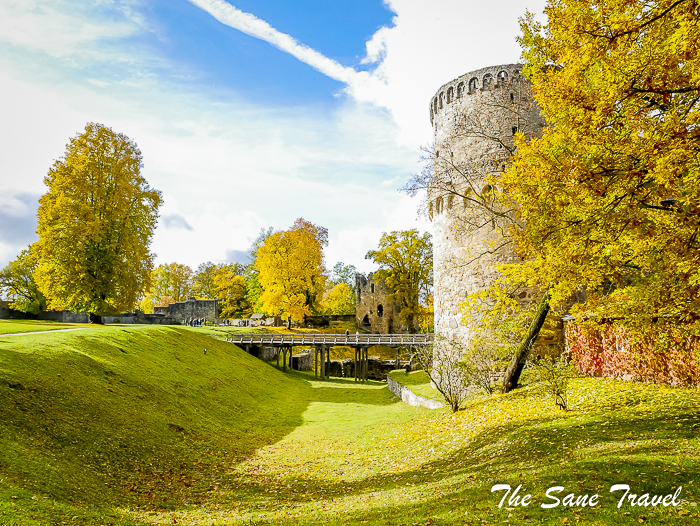
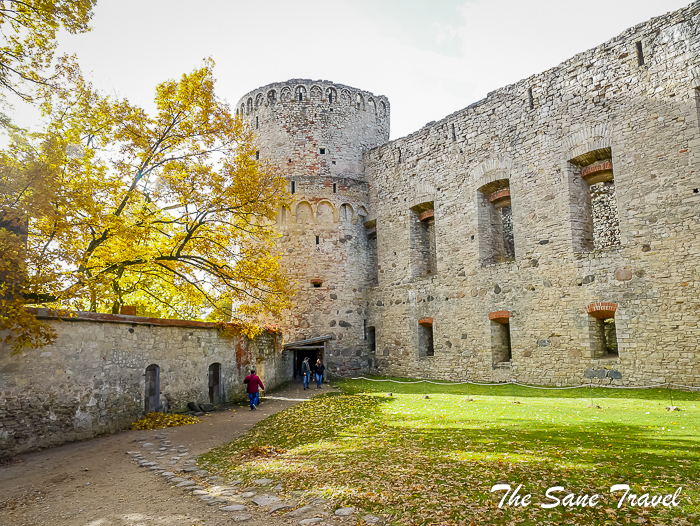
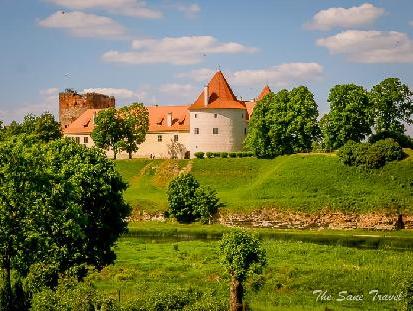
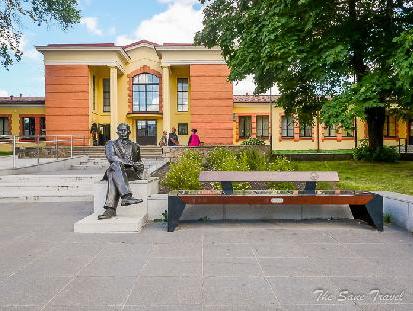
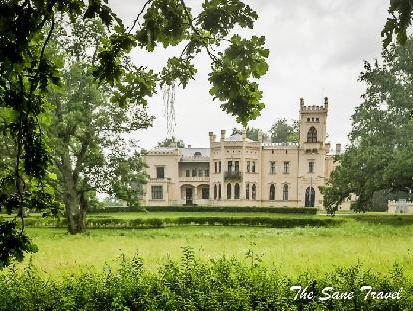
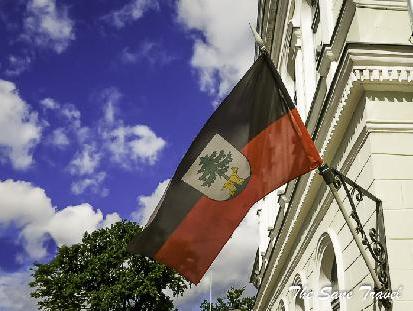
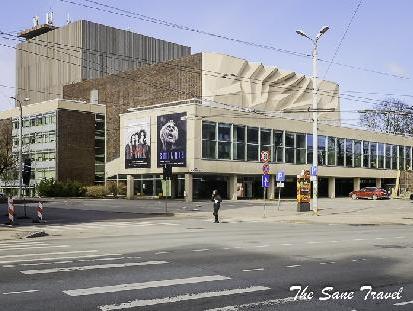
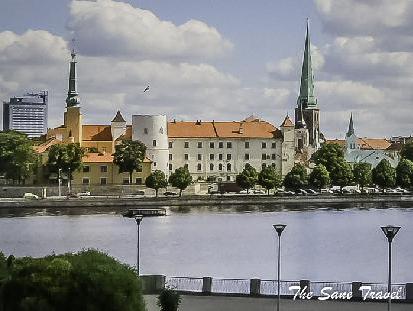
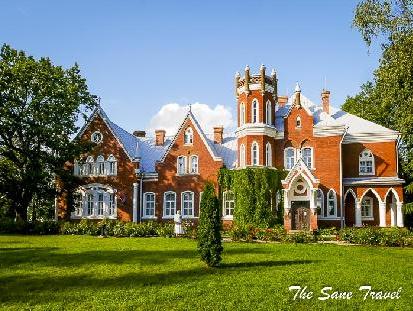
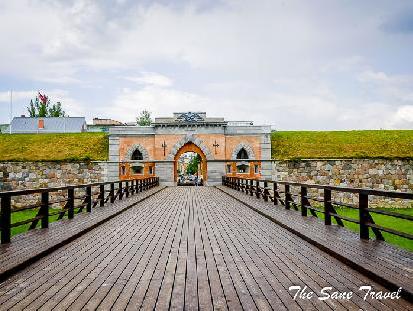
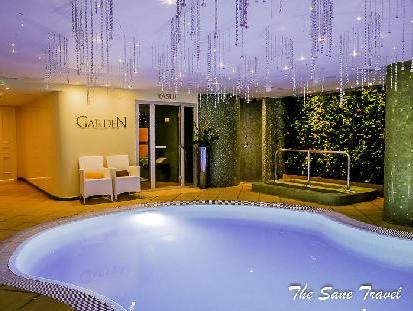
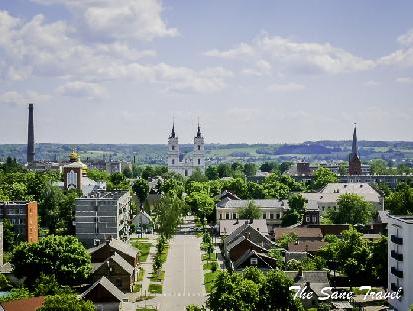
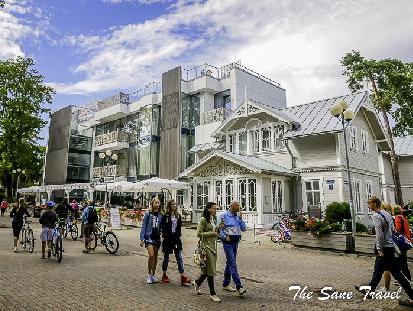
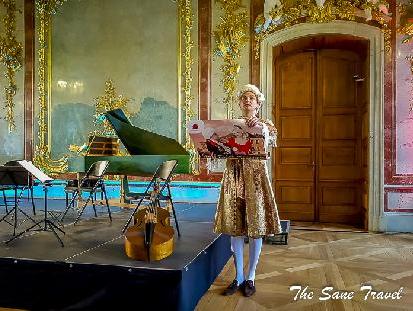
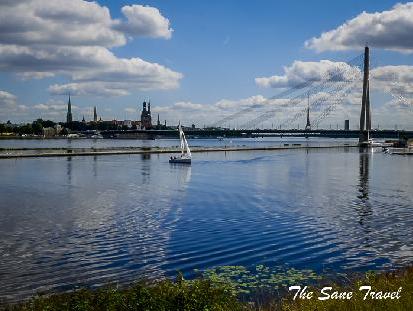
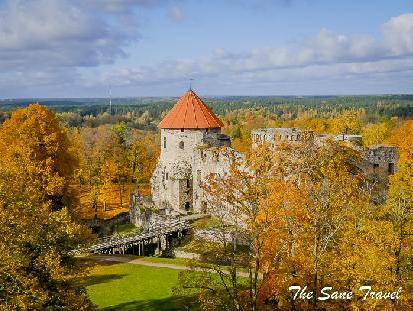
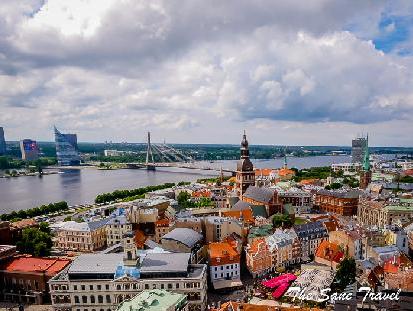
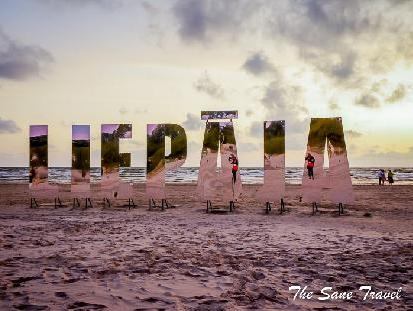
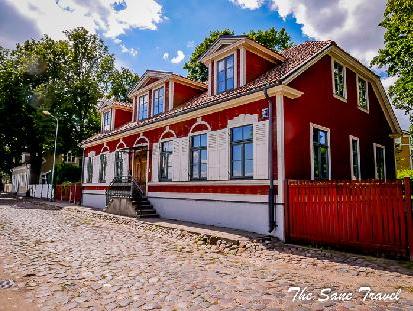
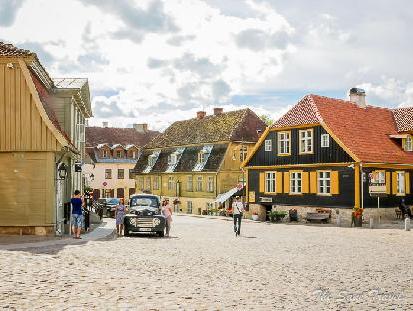
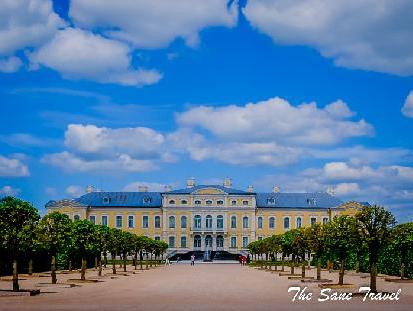
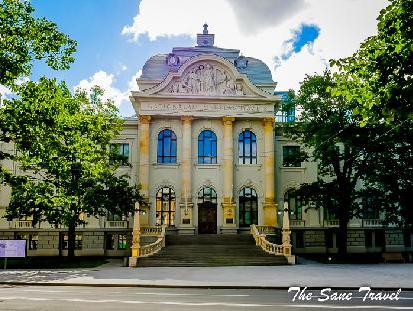
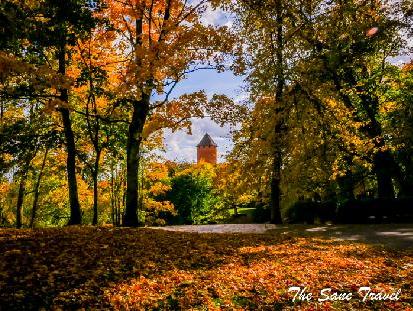
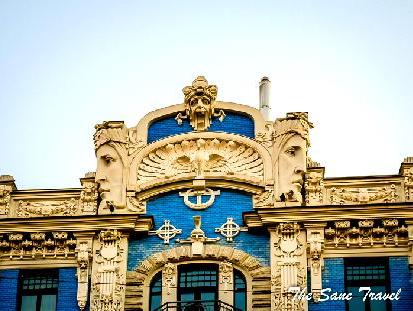
We will only have about 7 days total & plan time in Liepaja to meet family located thru geneology search.
Any recommendations in these regions (castles, restaurants, hotels) would be appreciated.
Paldies! -- And if my questions are not appropriate (other than the castles)...my apologies.
Dorothy Visgauss Shivers
thanks for your question commenting on my article about Latvian castles.
I am glad that you have found your family roots in Latvia. As your visiting time is some time in the future, please check my posts on Latvia. I have quite many of them including Riga, Liepaja, Kuldiga, and other places, and also one week Latvia itinerary. We can contact each other again when your visit will come closer.
https://thesanetravel.com/travels/latvia
Best regards,
Anita
Report
My comments